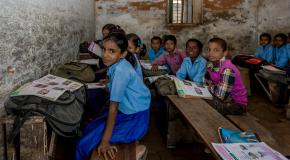When Udacity, a massive open online course (MOOC) platform with 8m users,[1] announced recently that its annual revenue more than doubled in 2017 to US$70m, it cemented the massive reach of this new paradigm in education.[2] Yet despite a global landscape of 81m learners hitting the digital books across 9,400 courses,[3] an average course completion rate as low as only 6% has blunted some of the appeal of this high-flying trend.[4]
The situation for MOOCs is quite different in South-east Asia—there, the completion rate can reach higher than 40%.[5] The region sees MOOCs in a different light than Western countries: where the latter views them as a way to boost one’s skills in short-term bursts (or, in some instances, as a potential investment opportunity), for South-east Asia, MOOCs may be a way to bridge a formidable gap in basic education.
The remote-learning potential MOOCs introduce could potentially alleviate some long-standing barriers to education caused by poverty, geographical distance, physical disabilities, overfilled schools and other factors. According to UNESCO, a tenth of all secondary-school age children in the Philippines were not engaged in formal education in 2015—a proportion that shoots up to 17% in Thailand and 25% in Malaysia.[6] South-east Asia’s overall population continues to grow, expanding by around 1.2% annually, adding more students to school rolls and threatening to strain educational capacity.[7] The region is thus expected to suffer from a shortage of 6.3m teachers by 2030, according to UNESCO.[8]
“Typical universities and educational institutions are far behind in meeting the needs of modern job markets in the region,” says Sheila Jagannathan, head of digital learning at the World Bank. “MOOCs will aid in minimising the economic gap by providing equal education opportunities for the public. They are not the only solution, but one in a package of facilitation activities for continuous learning.”
Move fast and learn things
South-east Asia is indeed rapidly embracing MOOCs’ disruptive potential. In 2016 the Southeast Asian Ministers of Education Organization, an intergovernmental body, discussed the need to “formulate strategies on how to better use MOOCs for equitable and accessible quality education for all”,[9] as UNESCO has done too.[10] Joane Serrano, information office director at the University of the Philippines Open University, which provides its own MOOC platform, says interest in MOOCs in South-east Asia has increased in recent years. “Almost all countries in the region are now offering their own MOOC platforms,” she says.
Malaysia, for instance, has highlighted MOOCs in their education blueprint for 2015-25, with plans to convert common undergraduate courses to MOOCs, and advocates the use of blended learning models—which integrate remote learning into classroom courses—for up to 70% of educational programmes.[11] Indonesia, meanwhile, began to provide annual grants for the creation of online learning materials in 2012,[12] while the Philippines accepts online courses as part of formal education programmes and encourages media and other organisations to provide assistance to developing programmes by offering tax exemptions.[13]
Digital laggards
Hurdles to widespread MOOC adoption persist, however, most notably in the region’s underdeveloped digital infrastructure. MOOCs require fast streaming of high-definition videos and regular interaction between users and instructors.[14] Yet an assessment conducted in 2017 found the Philippines’ average connection speed along fixed-line networks ranked lowest in Asia-Pacific and 24% lower than the global average.[15] Although the vast majority of the country’s population has access to mobile internet, only 34% of households own a computer[16]—far more useful than a smartphone for completing intensive online courses. The figures for computer ownership in Laos, Vietnam, Thailand and Indonesia are even lower.[17] The public’s lack of digital competency further weighs down the development of MOOCs in some countries in the region, says Ms Serrano; language barriers pose an additional challenge.
Yet there is little doubt that MOOCs will continue to grow in popularity as these connectivity problems are potentially addressed. Western MOOC giants will probably target the market further in future, riding a wave of government advocacy of online courses. Coursera, a major Silicon Valley-based MOOC provider, has been establishing a presence in Asia for years,[18] recently announcing a partnership with Bank of Singapore to provide internal training to its 2,000 employees across the region.[19] South-east Asia may yet see MOOCs go from a niche part of its education system to a major tool in addressing inequality in learning.
The views and opinions expressed in this article are those of the authors and do not necessarily reflect the views of The Economist Intelligence Unit Limited (EIU) or any other member of The Economist Group. The Economist Group (including the EIU) cannot accept any responsibility or liability for reliance by any person on this article or any of the information, opinions or conclusions set out in the article.




